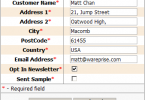 Most organizations will invest on buying health insurance for their staffs as a way to protect them from any accidents or critical illnesses that might just occur at any point of their lives.
Most organizations will invest on buying health insurance for their staffs as a way to protect them from any accidents or critical illnesses that might just occur at any point of their lives.
But when it comes to protecting work related documents, are organizations doing enough to ensure that all important data belonging to employees and the company are well protected from the following incidents:
- Vandalism
- Stolen laptops
- Crashed hard disk
- Servers hacked into
Some organizations will remind their staffs to frequently perform their own backup into an external or cloud storage server such as MyPCBackup to avoid the problems that can be caused by a hard drive or network failure..
To me, this is like not buying health insurance for staffs and telling them to take good care of themselves by having a better diet and having more regular exercise.
If your organizations prefers to not rely on staffs to do their own backups, then maybe it’s time to look into implementing an enterprise backup strategy for all to benefit from.
When searching for the right backup software or vendor, the following are 5 points I would consider when implementing an enterprise data backup strategy:
Is the backup process resource hungry
One reason why I don’t like to backup my machine is because it can sometimes disrupt my PC usage experience. Because of this, I would leave the backup process to run at the end of the day but hey! it’s time to go home after a long work day. So why not leave it till tomorrow and the days after. Soon I realized that I don’t really have an effective and reliable backup in place because the data is only as good as the last time when it was safely stored.
A good backup process should only be resource hungry / cpu intensive when it is executed for the very first time. Subsequent backups should be in an incremental or progressive mode which backs up only new or modified data thus should run effortlessly in the background without the user even noticing that data has been backed up.
How long can data be retained
Some backup solutions together with its procedures allow backups to be kept for a maximum of 1 month before the data gets overwritten. But what if you need some project information that was completed about 6 months ago and now that your hard disk is corrupted, the only data that can be recovered is those from a month ago of work.
A reliable enterprise data backup strategy should ensure that data can be retained, restored and recovered up till the day when the first backup was done, even if it was done a few years ago.
Can data be stored offsite
I’ve seen some organization performing backups for their servers into a tape drive and leaving the tapes right next to the physical server. If a disaster occurs, both the server and the tapes will be destroyed together.
It is important that your enterprise backup strategy ensures that all backed up data are stored in another location. Since the Internet speed is getting much faster at lower costs these days, backing up and storing data over the cloud is a good way to ensure that data can be stored in a remote location through cloud backup technology.
Can backup process be automated
If a backup solution is one that needs to be manually invoked then there’s a high chance that the backups won’t be done so frequently thus reducing it’s effectiveness.
A good enterprise backup solution should allow administrators to set the necessary configurations and allow the backup process to run automatically on a periodic basis. When a backup has been completed successfully, it should be logged and reports can be generated to view the status of the backups.
How fast can a backup be restored in case of a disaster
When your laptop gets stolen and an important client presentation is just a few days away, how fast can you get another machine and restore everything back to the last time it was backed up? After a machine goes missing or become inaccessible, our first thoughts are usually whether or not we have a backup of things and if the backup file can be restored altogether.
In your enterprise data backup strategy, it important to ensure that backups can be restored easily and fast enough to ensure that downtime is cut down to the minimum.
Check out the video below about grandfather, father, son (GFS) vs. progressive backup paradigm. photo credit: USACE Europe District
I hope the 5 points mentioned above together with the information provided in the video will give you a good idea on what to look out for when trying to implement an enterprise data backup strategy for your organization.





Leave a Comment